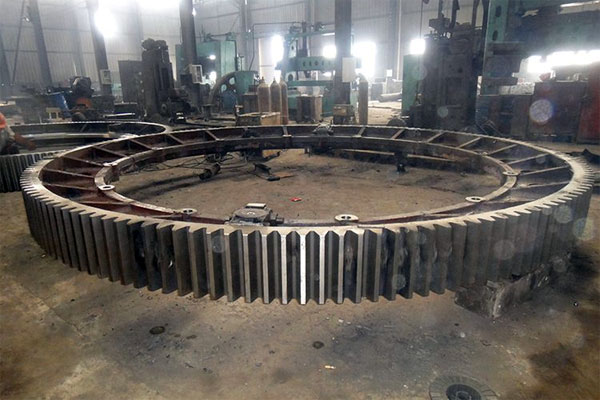The ball mill gear plays a pivotal role in ensuring smooth and efficient grinding processes in various industries, including mining, cement manufacturing, and chemical processing. This gear is a critical component of the ball mill machine, transferring rotational energy from the motor to the mill itself, where this energy is used to grind materials into fine powders. Understanding the importance of the ball mill gear in grinding operations highlights why meticulous selection, maintenance, and operation are crucial. Below are key aspects that illustrate the role of ball mill gear in ensuring smooth grinding processes:

1. Energy Transfer Efficiency
- The primary function of ball mill gear is to efficiently transfer energy from the motor to the mill’s drum. A well-designed gear ensures maximum energy transfer, minimizing energy loss and ensuring that the grinding process is as efficient as possible. This efficiency directly impacts production costs and operational efficiency.
2. Operational Stability
- Ball mill gears contribute to the stable operation of the grinding process. A gear with precise manufacturing and fitting can withstand the operational loads without failure, providing a steady rotational movement that is essential for uniform grinding. Any instability or vibration in the gear can lead to uneven grinding, affecting the quality of the final product.
3. Speed Control and Optimization
- Through the selection of gear ratios, ball mill gears enable speed control and optimization. This is crucial because different grinding tasks may require different drum speeds. Fine-tuning the rotational speed can optimize grinding efficiency, control the particle size distribution of the product, and adapt to varying materials characteristics.
4. Durability and Longevity
- The durability of the ball mill gear ensures continuous operation without unscheduled downtimes, which can be costly in terms of both repair expenses and lost production. High-quality materials and advanced manufacturing processes (such as precise machining and appropriate heat treatment) contribute to the gear’s longevity, even under the heavy loads and harsh conditions typical of grinding operations.
5. Noise Reduction
- A well-designed and precisely manufactured ball mill gear can significantly reduce operational noise, which is essential for improving the working environment and complying with noise regulations. Helical gears, for instance, offer smoother operation with less noise compared to spur gears.
6. Maintenance and Replacement
- The ease of maintenance and replacement of ball mill gears affects the overall efficiency and uptime of grinding operations. A design that allows for easy access, inspection, and replacement of the gear or its components can significantly reduce maintenance time and costs.
7. Cost Efficiency
- By optimizing the grinding process and reducing maintenance downtime, the ball mill gear contributes to cost efficiency. Operational efficiency not only affects the direct costs associated with grinding operations but also impacts the broader operational costs, including energy consumption and maintenance.
Conclusion
The role of ball mill gear in ensuring smooth grinding processes is multifaceted, impacting everything from energy efficiency and operational stability to cost management and product quality. The selection, maintenance, and operation of the ball mill gear require careful consideration to harness these benefits fully. As such, investing in high-quality gears and adopting best practices in maintenance and operation can significantly contribute to the overall efficiency and productivity of grinding operations.
